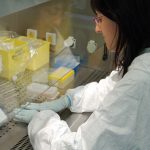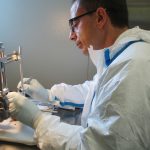ZOOPRION: A new prion research project begins

Nature is wise! Scientists are aware of this and that is why we often look to nature for some of the answers to questions that are difficult to answer. We have been researching prion diseases for many years now… who remembers mad cow disease nowadays? It seems like a thing of the past. But the harsh truth is that, to date, there is still no effective treatment for these fatal neurodegenerative diseases. Of course, since the mad cow crisis broke out, more than twenty years ago, we have learned a lot about prions and we have increasingly advanced tools to study them.
The answer we are looking for in nature now is: how can we become resistant to prions?. How can we prevent an individual with a prion disease (whether acquired, genetic or idiopathic) from dying? In previous projects we have studied why some species are more resistant to prions than others. In these projects we learned that rabbits were not resistant to prions, on the contrary, they could be infected with many different prion isolates. We also learned that horses had a hard enough time getting infected but, in the end, not only they could but they did it in a different way than other species, they didn’t allow the prion strain to adapt to the equine species so it is much more difficult for this disease to spread among this species and also it retains the characteristics of the initial strain. This is known as non-adaptive prion amplification or NAPA. We also studied the dogs, these were particularly interesting because they had eaten the same feed contaminated with mad cow prions as the cats and, unlike those who went down with Feline Spongiform Encephalopathy, the dogs never got a prion disease, that is currently known. By studying the amino acid sequence of the dog prion protein, we were able to define the reason for this resistance: the presence of the aspartic or glutamic acid amino acid at the 163 position.
The lesson learned from all these projects is that nature has designed some prion proteins that are more difficult to misfold and therefore become pathological. In recent years the team of Dr. Castilla from CICbioGUNE has learned to manufacture prions in the laboratory: from recombinant prions (that is, synthetic, designed in a test tube) they have managed to perfect a technique that, without the need to add an external source of prions, allows misfolding this synthetic prion protein and generate an infectious prion in the laboratory.
What this tool allows us to do is, for example, generate sufficient amounts of prions to study their structure. But it also allows us to look for a hidden treasure: the most resistant prion protein of all. If we can find a protein that cannot be misfolded, it would be useful to design a gene therapy-based treatment where the presence of this protein would prevent the progress of the disease due to what is known as a negative dominant effect. The advantage of finding it among a catalogue of proteins already designed by nature is that it will most likely retain its functionality and, therefore, be more effective.
So what we propose in this project ZOOPRION (PID2021-122201OB-C22) coordinated between CICbioGUNE and IRTA-CReSA and partially financed by the Spanish Science and Innovation Ministry is to study in vitro a large amount of prion proteins from the most varied mammal species possible in order to find the one that is more resistant to misfolding and use it to generate a transgenic mouse model fully resistant to prions. Then, to demonstrate that it has the ability to exert a dominant effect in vivo, it will be necessary to cross this mouse with another model susceptible to prions and study whether the offspring become resistant or not.
On the other hand, we will also look for the most susceptible prion protein sequence of all with the aim of generating a second transgenic mouse model, opposite to the previous one, which is as susceptible as possible to prion infection. Prion diseases are characterized by very long incubation periods, and this makes the research for treatments difficult and expensive. A model that reproduces very quickly the neurodegeneration caused by prions, will allow studying treatments in a much more cost-efficient way than those that currently exist.
So this project, with a one health approach, combines CICbioGUNE’s experience in in vitro prion protein engineering with the possibility of working in vivo with infectious prions in the level 3 high biological containment unit of the IRTA – CRESA. We trust that with the results of the project we will contribute with two very valuable new tools to the field of prion diseases.
Image source: Wikimedia commons.













